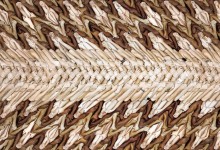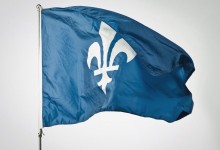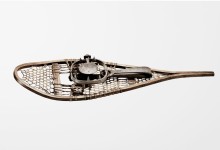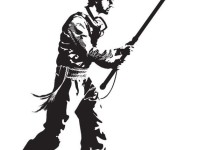The Transformative Alchemy of Simon Beaudry
Text by James D. Campbell
Simon Beaudry’s images infuse the hyper-real and the surreal with a documentary ethos/ethic that is entirely captivating and uniquely his own. They are a vital celebration of Quebecois national identity and possess enormous visual clarity.
It is no surprise to learn that Beaudry counts among his most important influences the pioneering documentary and film work of Quebecer Pierre Perrault (d. 1999) and the equally venerated Pierre Falardeau, (d. 2009) a Quebec film and documentary director, pamphleteer and noted activist for Quebec independence. Perreault built an oeuvre of poetic documentaries that still resonates as an eloquent and poetic interpretation of Quebec identity. Falardeau established a reputation for his brilliant documentaries and writings that focused on the political identity of Quebecers. Beaudry continues in their footsteps but brings his own poetic and cinematographic sensibility to bear. In conversation, he also cites his interest in contemporary visual artists such as Kent Monkman, Brian Jungen and BGL.
His work is a form of poetic activism in which he radically updates some of the more iconic fixtures of Quebec identity and life with an eye towards renovation and renewal. His Câliboire is at once a feat of orchestrated transformative alchemy and an auto-reflection on the concept of national identity that is radically open to dialogue. (This extends even to the facture of the work, when Beaudry assembles his production team
and they all work together to achieve his commanding vision.) One senses everywhere in this work an artist’s unalloyed passion for interrogating Quebec’s identity and sharing his insights across the broad array of issues linguistic, cultural, folkloric, historical, symbolic and so forth. He does not hold back and he does not play it safe. He calibrates and modernizes cultural references and traditions so as to preserve, inform, and champion. His aim is always emancipatory and the vivid cinematography brings this truth home to the viewer. Wed to the vigour of his imagery is a pedagogical impulse
with an undisguised political intent. Here, Beaudry seems to be saying, is the folklore of the moment in which Quebecers find themselves now.
In works like Famille québécoise (2009), Capitaine Québec (2009) and Triptyque de la décadence identitaire, la parole (2010), Beaudry demonstrates rare irony, wit and a fierce passion for his homeland – and offers his viewers a wild and compelling representation of the Quebec national identity renewed.











